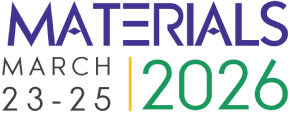Title : Burn in Testing BIT in Electronics Manufacturing To BIT or Not to BIT Thats the Question
Abstract:
Analytical ("mathematical") predictive modeling enables shading useful light on what and how should be tested, if at all, and how to improve the burn-in-testing (BIT) process, if decided upon, in electronics manufacturing. Three predictive models have been developed and addressed in this presentation, and the following information has been obtained. 1) Analysis of the infant mortality portion (IMP) of the bathtub curve (BTC) of the particular manufacturing technology suggests that the (non-random) time-derivative of the expected "favorable" (i.e., characterized by a decreasing failure rate with time) statistical failure rate (SFR) at the beginning of the IMP (this failure rate is, in a way, opposite to the "unfavorable" physical failure rate (PFR) associated with material degradation and aging; this process commences at the later stages of the BTC, is characterized by an increasing failure rate with time, and is not considered in our analysis) could be viewed as a suitable criterion that enables answering the basic question of the BIT undertaking: “to BIT or not to BIT?”. Indeed, if this derivative is zero or next-to-zero, i.e., if the IMP of the BTC is parallel to the horizontal (time) axis, the IMP does not exist and no BIT is necessary. In the opposite extreme situation, when this derivative is significant, i.e., when the initial portion of the IMP of the BTC "clings" to the vertical (failure rate) axis of the BTC, the "freaks", although do exist in the manufactured population, could be easily removed by applying low level and short-in-time failure-oriented-accelerated testing. 2) Analysis of the random failure rate (RFR) of the mass-produced components that the manufactured product of interest is comprised of suggests that the above derivative is, in effect, the variance of this failure rate; the reliability of these components is seldom available, i.e. typically uncertain, and could very well vary from zero to infinity; we derived a formula for the SFR of the manufactured product based on the probability distribution of the RFR of the mass-produced components and carried our calculations for the case, when this distribution is normal. 3) Analysis based on the multi-parametric Boltzmann-Arrhenius-Zhurkov (BAZ) constitutive equation introduced by the author about a decade ago and applied in a number of publications enables establishing the BIT’s adequate duration and level, if this kind of testing is found to be necessary. The theoretical concepts and findings are illustrated by calculated data. It is concluded that predictive modeling should always precede the actual BIT, that analytical modeling should complement computer simulations and that future work should address the experimental validation and possible extension of the obtained results and recommendations.
What will audience learn from your presentation?
- Explain how the audience will be able to use what they learn?
- Understand better the reliability physics of the burn-in-testing process in electronics manufacturing
- Consider means for improving this process, and particularly what could possibly be done to eliminate "freaks" without damaging the "healthy" population of the manufactured products
- Consider means for making the BIT process time and cost effective
- Although the presentation does not dot the i's and cross the t's, as far as the BIT process is concerned, it nonetheless sheds useful light on several critical features of this process by providing new and non-obvious information to assist in the addressed manufacturing problem



